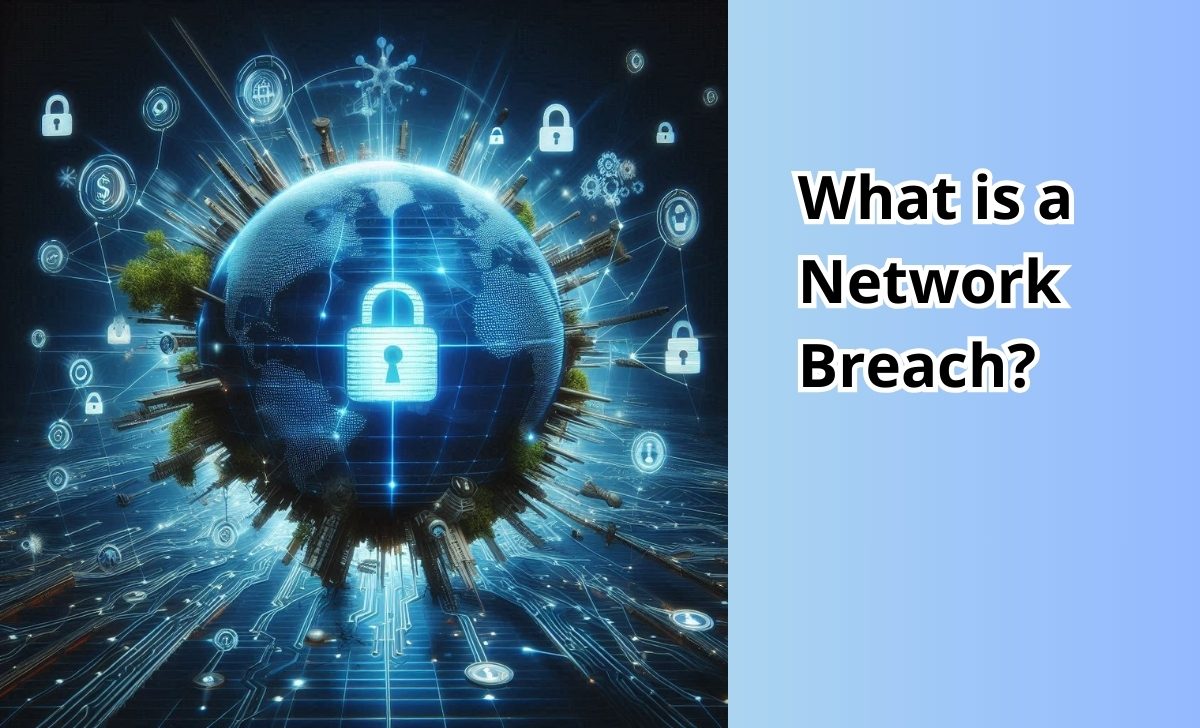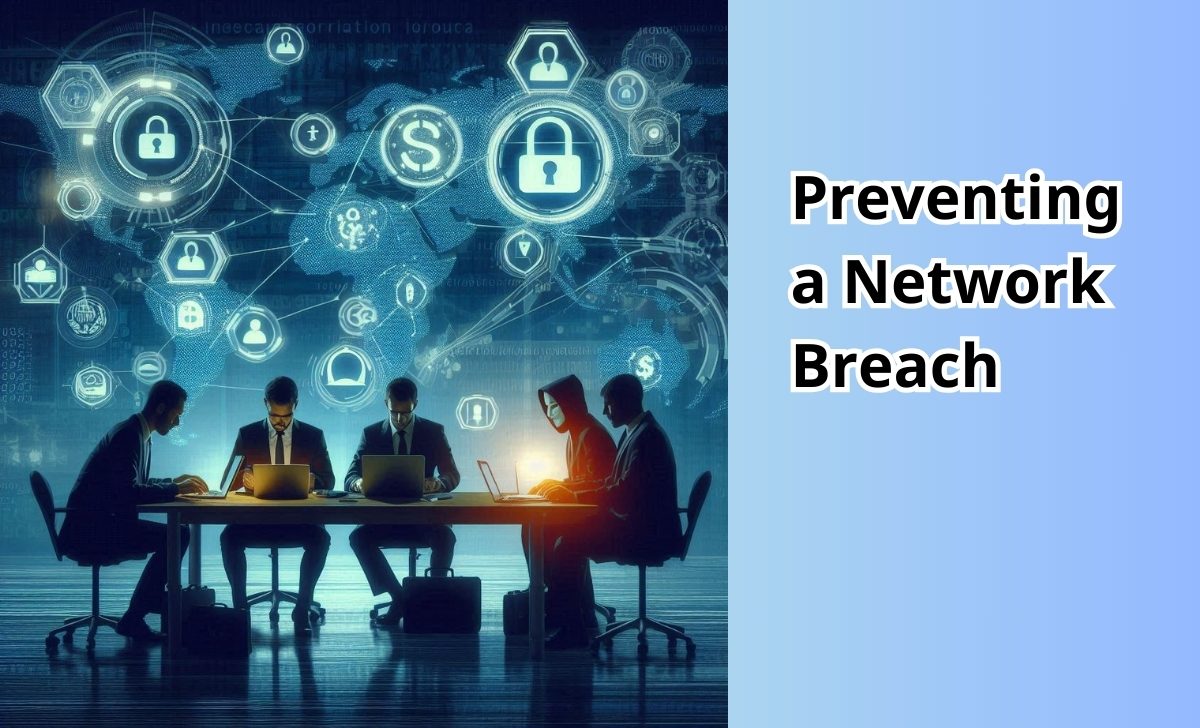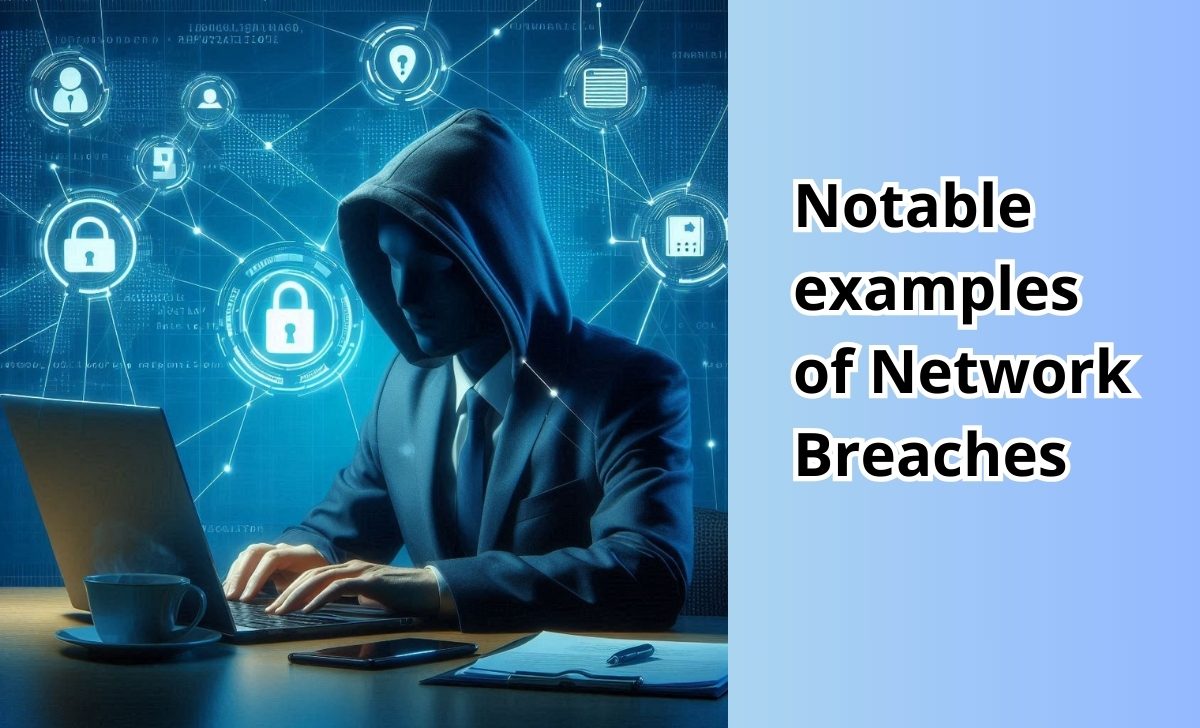Network Breach is a serious threat to any organization in the digital age. It refers to unauthorized access to a network system, leading to significant financial, reputational and operational damage.
So, what exactly is a network breach and what are the causes behind it? Let’s explore this in-depth with AZCoin in the following article.
What is a Network Breach?

A network breach occurs when a network system is infiltrated without authorization, resulting in the theft, modification, or destruction of system data and resources. These attacks can originate from external sources via the Internet or from internal devices within the network.
The objectives of a network breach can include stealing sensitive information, disrupting organizational operations, or extorting money through malicious software like ransomware.
Common Types of Network Breaches include:
- External Breach: Attacks originating from outside the network, typically via the Internet.
- Internal Breach: Attacks from within, which could be carried out by employees or compromised internal devices.
- Physical Breach: When a hacker gains physical access to hardware or network devices to execute an attack.
The primary difference between a network breach and a data breach lies in the scope and target of the attack. A network breach involves unauthorized access to a network system, while a data breach focuses on stealing or leaking specific data.
Causes of a Network Breach
Several factors can lead to a network breach, including:
- Security Vulnerabilities in the System: Outdated software or hardware can contain vulnerabilities that hackers exploit to gain unauthorized access.
- Insider Threats: Employees or individuals with system access may unintentionally or deliberately cause a network breach.
- Using Outdated or Unpatched Software: Older software versions may have publicly known vulnerabilities that hackers can exploit.
- Threats from Unsecured IoT Devices: IoT devices often have weak security measures and are susceptible to attacks, compromising the primary network system.
Methods of attack in a Network Breach

Hackers employ various methods to breach network systems, including security breaches:
- Phishing and Social Engineering: Techniques used to deceive individuals into revealing login credentials or installing malicious software on the system.
- Malware and Ransomware: The distribution of malicious software within the network system to steal data or demand ransom.
- Man-in-the-Middle (MitM) Attack: Hackers intercept and monitor network traffic between two systems, allowing them to hijack or alter data.
- Distributed Denial of Service (DDoS) Attack: Attacks that disrupt network operations by overwhelming servers with illegitimate traffic.
Consequences of a Network Breach
A network breach can result in severe consequences for an organization, including:
- Financial and Data Loss: Organizations may suffer significant financial losses due to data breaches or operational downtime.
- Impact on Reputation and Brand: A breach can erode customer and partner trust, negatively impacting the organization’s long-term reputation.
- Legal and Regulatory Implications: Organizations may face lawsuits and fines if they fail to adequately protect customer data.
- Recovery Time and Costs: The recovery process following a network breach can be lengthy and costly, often requiring the intervention of security experts.
Preventing a Network Breach

Preventing a network breach requires a comprehensive strategy, including:
- Implementing Strong Security Measures: Use firewalls, Intrusion Detection Systems (IDS), Intrusion Prevention Systems (IPS) and data encryption to protect the network system.
- Using Security Software and Regular Updates: Ensure that all software and devices are regularly updated to patch security vulnerabilities.
- Employee Cybersecurity Awareness Training: Train employees to recognize phishing attempts and other threats to minimize internal risks.
- Conducting Regular Security Audits: Regularly assess and test security measures to identify and address vulnerabilities and risks.
Additionally, if you are involved in cryptocurrency trading, it’s essential to choose from the list of the best crypto exchanges 2024 to ensure a safe transaction process.
Responding to a Network Breach
If a network breach occurs, quick and effective response measures are crucial:
- Detecting and Responding Quickly: Use monitoring tools to detect early signs of intrusion and respond promptly.
- Implementing Recovery and Mitigation Measures: Shut down affected systems, restore from secure backups and investigate the attack’s source.
- Incident Reporting and Legal Compliance: Notify authorities and customers if data has been compromised and comply with relevant regulations.
- Post-Incident Evaluation and Improvement: Assess current security measures and make necessary improvements to prevent future attacks.
Notable examples of Network Breaches

Here are some notable network breaches that have provided valuable lessons:
The Target Attack (2013)
The attack on Target, one of the largest retailers in the U.S., is one of the most well-known network breaches. Hackers infiltrated Target’s payment system through a third-party HVAC (heating, ventilation and air conditioning) service provider.
They installed malware on the Point of Sale (POS) system and stole credit card information from over 40 million customers. This incident cost Target over $200 million in compensation and remediation efforts and severely impacted the company’s reputation.
The Sony Pictures Attack (2014)
In 2014, Sony Pictures Entertainment fell victim to a large-scale cyberattack. A group of hackers known as “Guardians of Peace” infiltrated Sony’s network, stealing and releasing sensitive documents, including unreleased films and personal employee information.
The attack was allegedly linked to Sony’s upcoming release of “The Interview,” a controversial film mocking North Korea’s leader. The breach caused significant financial losses and damaged Sony’s business operations and reputation.
The Equifax Attack (2017)
Equifax, one of the three largest credit reporting agencies in the U.S., suffered a cyberattack in 2017, resulting in one of the largest data breaches in history. Hackers exploited a vulnerability in Equifax’s web software, gaining access to personal information of about 147 million Americans, including Social Security numbers, birthdates, addresses and financial data.
The breach sparked public outrage, leading to investigations and legal actions. Equifax had to pay billions of dollars in compensation and invest in protecting affected individuals’ information.
The Colonial Pipeline Attack (2021)
Colonial Pipeline, the operator of the largest fuel pipeline system in the U.S., was attacked with ransomware in May 2021. The attack disrupted the pipeline’s operations, causing severe fuel shortages in several eastern U.S. states.
The Colonial Pipeline paid $4.4 million to the hackers to restore its system, although a portion of the money was later recovered by the FBI. This incident underscored the dangers of ransomware and the importance of protecting critical infrastructure from cyberattacks.
Conclusion
The detailed information about network breaches shared by AZcoin highlights the seriousness of these threats. Understanding the risks and taking preventive measures, while being ready to respond effectively, are essential steps in safeguarding your data and resources.

I am Louis Dang, living in Ottawa, Canada. I am currently working as a trader for AZCoin company, with 7 years of experience in the cryptocurrency market, I hope to bring you useful information and knowledge about virtual currency investment.











